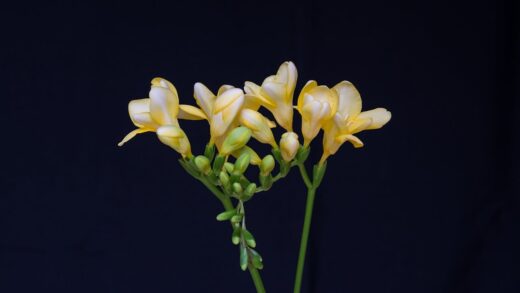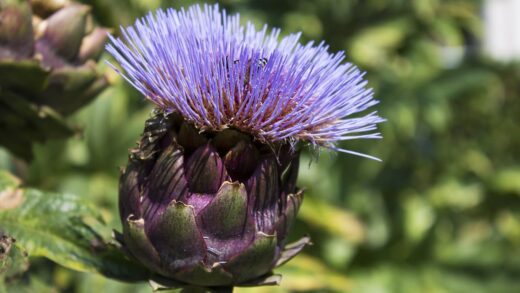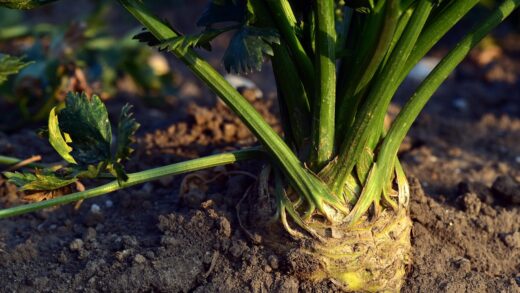Pruning an aloe vera plant is a simple but important maintenance task that helps to keep it healthy, aesthetically pleasing, and manageable in size. Unlike pruning shrubs or trees to encourage branching, pruning an aloe primarily involves the selective removal of specific leaves for various reasons, including harvesting, sanitation, and cosmetic improvement. This process is not about drastically reshaping the plant but rather about carefully curating its growth. When done correctly with the proper tools and techniques, pruning can enhance the plant’s vigor and appearance without causing it any harm.
There are several key motivations for cutting back an aloe vera. The most common reason is to harvest the mature, outer leaves for their well-known medicinal and cosmetic gel. Another important purpose is to remove any leaves that are dead, damaged, or showing signs of disease, which is a crucial hygienic practice that helps prevent the spread of potential problems. Pruning can also be used to manage the plant’s overall size and shape, particularly by removing the numerous offshoots, or “pups,” that a healthy plant produces.
The process of pruning is straightforward, but it requires a clean and precise approach to avoid damaging the plant. Using a sharp, sterilized cutting tool is paramount to ensure a clean cut that will heal quickly and to prevent the introduction of pathogens into the plant tissue. The location of the cut is also important; leaves should always be removed from the base of the plant, where they connect to the main stem.
By learning the proper reasons, tools, and techniques for pruning, you can confidently maintain your aloe vera. This not only improves its current state but also encourages healthy future growth, ensuring that your plant remains a beautiful and productive part of your indoor garden for many years to come.
Reasons for pruning aloe vera
One of the most popular reasons for pruning an aloe vera is to harvest its leaves. The gel contained within the thick, fleshy leaves has been used for centuries for its soothing and moisturizing properties. For harvesting purposes, you should always select the oldest, largest, and outermost leaves. These mature leaves have the highest concentration of beneficial compounds. Pruning these lower leaves has the added benefit of not disturbing the new, delicate growth emerging from the center of the plant.
Sanitation is another critical reason for pruning. It is important to regularly remove any leaves that are dead, dried out, broken, or showing signs of damage or disease. These compromised leaves serve no purpose for the plant and can become entry points for fungal diseases or hiding places for pests. By promptly cutting away this unhealthy foliage, you improve the plant’s overall hygiene and reduce the risk of future problems, while also directing the plant’s energy towards healthy growth.
Aesthetic improvement and size management are also valid reasons for pruning. Over time, the lower leaves will naturally wither and die as part of the plant’s life cycle, and removing them keeps the plant looking tidy and attractive. Furthermore, a mature and thriving aloe vera can produce a large number of offshoots, or pups, around its base. While this is a sign of a healthy plant, it can lead to an overcrowded pot. Pruning these pups away helps to maintain the desired size of the plant and provides you with new plantlets to propagate.
Finally, pruning can be used to correct a plant’s shape, particularly if it has become top-heavy or is leaning to one side. By selectively removing some of the larger, heavier outer leaves, you can help to restore the plant’s balance and stability in its pot. This type of corrective pruning can prevent the plant from toppling over and encourages a more symmetrical and upright growth habit.
Tools and techniques for clean cuts
The single most important tool for pruning an aloe vera is a clean, sharp cutting instrument. A long, thin-bladed knife, a pair of sharp scissors, or floral snips are all excellent choices. Using a dull blade can crush the plant’s tissues rather than slicing through them cleanly, which results in a ragged wound that is slow to heal and more susceptible to infection. A sharp blade ensures a smooth, precise cut that minimizes damage to the plant.
Equally important as sharpness is sterility. Before you begin pruning, you must sterilize your cutting tool to prevent the transfer of bacteria, fungi, or other pathogens into the open wound of the plant. You can easily sterilize your tool by wiping the blade thoroughly with isopropyl alcohol (rubbing alcohol) or a household disinfectant. This simple step is a crucial part of plant hygiene and should never be skipped, especially if you are using the tool on multiple plants.
When you are ready to make a cut, the correct technique is to slice the chosen leaf off as close to the main stem as possible. Angle your blade downwards towards the stem and make a single, clean cut through the base of the leaf. Avoid tearing or ripping the leaf away, as this can damage the main stem and create a larger, more irregular wound. The goal is a swift and decisive cut that leaves a neat surface.
After a leaf has been removed, the plant will naturally seal the wound over time. A clear, yellowish sap may ooze from the cut initially; this is normal and is part of the plant’s healing process. This sap will dry and form a callus over the wound, protecting it from infection. There is no need to apply any kind of sealing compound to the cut; the plant is perfectly capable of healing itself.
Removing damaged or dead leaves
The removal of dead or damaged leaves is a fundamental aspect of aloe vera maintenance. As the plant grows, it is natural for the oldest, outermost leaves at the bottom of the plant to gradually dry up, turn brown, and wither. These leaves have reached the end of their life cycle and are no longer contributing to the plant’s health through photosynthesis. Removing them is beneficial for both aesthetics and hygiene.
To remove these leaves, identify the ones that are completely brown, dry, and shriveled. Often, these leaves are so dry that they can be gently pulled off by hand with a slight tug. If the leaf does not come away easily, do not force it, as this could tear the stem. Instead, use your sterilized knife or scissors to cut it off cleanly at the base, right against the main stem of the plant.
You should also prune any leaves that are broken, bent, or otherwise physically damaged. A leaf with a significant crack or break in it will not heal and will eventually die off. It is better to remove it cleanly to prevent it from becoming a potential site for rot or disease. Use the same technique of cutting the entire leaf off at its base.
Similarly, if you notice a leaf with isolated spots of disease, such as aloe rust, you might choose to prune it to prevent the potential spread of fungal spores and to improve the plant’s appearance. While aloe rust is often not a serious threat, removing the affected leaves can be a good preventative measure. This regular cleanup keeps the plant looking its best and channels its energy into producing new, healthy growth.
Harvesting outer leaves for gel
Harvesting is a form of pruning that provides the dual benefit of tidying the plant and providing you with fresh aloe gel. When selecting leaves for harvest, always choose from the outermost layer of the plant. These are the most mature leaves and will be the largest and thickest, containing the most gel. Never harvest the young, small leaves from the center of the plant, as this is the plant’s new growth and removing it will damage its future development.
Choose a leaf that is plump, healthy, and has a rich green color. Using your sharp, sterilized knife, make a clean, angled cut at the very base of the leaf, as close to the main stem as you can get. Pruning the entire leaf is the best practice. Cutting only a tip or a section of a leaf leaves an open wound that will not regrow and will eventually wither, so it is better to harvest the whole leaf at once.
After cutting the leaf, hold it upright with the cut-end down for a few minutes over a sink or a bowl. You will see a yellow, latex-like substance drip out. This is called aloin, and it can be a skin irritant and has a laxative effect if ingested, so it is best to let it drain out completely before you process the leaf for its gel. This draining process typically takes about 10 to 15 minutes.
Once the aloin has drained, you can wash the leaf and proceed to extract the clear gel. Lay the leaf flat and trim off the serrated, spiky edges. Then, carefully slice the leaf open lengthwise, or fillet the top green skin away, to expose the clear, jelly-like pulp inside. This gel can then be scooped out with a spoon and used as needed. Remember to only harvest a few leaves at a time to avoid overly stressing the plant.
Pruning for shape and size management
Pruning is an effective tool for managing the size and shape of an overgrown or unruly aloe vera plant. A healthy, mature plant can become quite large and may start to lean or become top-heavy. By selectively removing some of the largest, heaviest outer leaves, you can reduce the overall weight and help to restore the plant’s balance and symmetrical appearance. This can be particularly important for plants in smaller pots that are at risk of tipping over.
The most significant aspect of size management is dealing with the production of offshoots, or pups. A thriving aloe will send out new plantlets from its base, which can quickly lead to an overcrowded pot. While it may be tempting to leave them all, this can sap energy from the mother plant and lead to a tangled mass where no individual plant has enough room to flourish. Regularly removing these pups is a form of pruning that is essential for long-term health.
To remove the pups, you will need to gently unpot the entire plant to get a clear view of the root system. Using a clean knife, carefully separate the pups from the mother plant, ensuring that each pup has some of its own roots attached. This not only cleans up the main plant but also provides you with a collection of new plants that can be potted up individually after they have been allowed to callus over for a few days.
By regularly performing these pruning tasks—removing dead leaves, harvesting mature leaves, and separating pups—you are actively managing the growth and form of your aloe vera. This proactive approach prevents the plant from becoming a neglected, overgrown specimen. Instead, it encourages a strong, healthy central plant and a tidy, aesthetically pleasing appearance, making it a more beautiful and manageable houseplant.


















